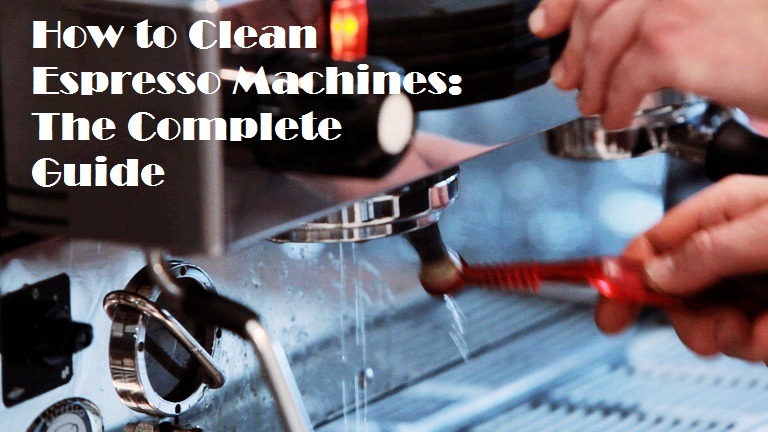
We all love espresso, but cleaning is nobody’s favorite activity. If you avoid cleaning your espresso machine it will stop producing that perfect espresso you enjoy so much. This is why, after buying a new espresso machine, there comes a time in every espresso drinker’s life when he will have to put some kind of cleaning routine in place, in order to maintain standards. But don’t get scared, it’s not a full time job. It’s enough to select some of the guidelines that you will learn about and stick with them. After less time than you imagine, you’ll get used to the new routines, so keeping your espresso machine in a great condition will be a lot easier than you probably imagine right now.
There are basically 2 major steps when cleaning any espresso machine, and those are cleaning the exterior and the interior.
Table of Contents
Step 1: Cleaning the Exterior
The exterior of your espresso machine will probably need a lot less cleaning than the interior. Most espresso machines are made out of plastic and metal, and they can be easily cleaned with an all purpose cleaner.
Important Tip: Make sure to avoid getting any type of external surface cleaner into the interior of your espresso machine.
Step 2: Cleaning the Interior
After cleaning the exterior, it’s time to move on to the interior. This is the part that will probably need the most cleaning.
You can either use a commercial espresso machine cleaner, or you can always use vinegar and water if you prefer a more natural method.
If you choose to go with vinegar and water, you will have to add 1.5 oz. of vinegar to every 10 oz. of water. Just run the mixture through the machine, and continue with multiple runs of fresh water after that.
After going through the process described above, the next step is focusing on the removable parts, namely the wand (if your espresso machine has one, and most do) and the brew head.
You will be able to disassemble these parts fairly easy, but pay a lot of attention at the order of the parts, if there are multiple parts, to be able to assemble them back in the right order. Also make sure that there is no water inside when you remove the parts. After removing them, the best kind of tool is a brush. A toothbrush will probably get the job done.
After making sure that both the interior and exterior are clean, run a full load of water through the machine, but make sure to stop just before the entire water gets out.
Putting good cleaning routines in place
Learning how to clean an espresso machine is of low value if you don’t have some kind of routines in place. Right from the start, cleaning should not be performed only when you can’t look at your machine any more. The whole reason why you got an espresso machine in the first place, is because you love espresso. If you don’t keep your machine in the proper condition, your espresso shot’s quality is the one that will ultimately suffer.
After every shot
You might think this is a bit too much, but after enjoying your espresso, you might want to use that boost of energy to give it a quick cleaning. After washing away the grinds that remained on the dispersion screen, run a quick clean water flush. The reason why you should clean your espresso machine to some degree after every shot is because the oils found in coffee tend to go rancid after 45 minutes. This means that if you don’t remove as much as possible of it, the next time you’ll brew a shot, all those oils will end up in your cup, spoiling the taste of your espresso.
Daily routine
- The one thing that you should do after every use is cleaning the steam wand. The problem that appears when using the wand frequently, without cleaning it, is the risk of milk getting sucked into the boiler. The best thing you can do, at the end of each day, is to disassemble it and let it soak in a water and detergent mixture for about 15 to 20 minutes. If you notice any crusty milk on tip of the steam holes, remove them with a cloth or paper towel.
- To make sure that everything runs smoothly and that you will not experience quality decreasing after every shot, the easiest thing to do is flushing with clean water.
- Rinse, scrub and wipe every part that gets into direct contact with coffee.
Weekly routine
- Flush with a mixture of clean water, and some type of coffee detergent. This process will remove any oils that built up during daily use. You have to get all the remaining oil residues out of the machine, because it can turn your espresso sour.
- Soak the removable components that get into contact with coffee, for about half an hour into a mixture of clean water and coffee detergent, mainly because of the same reasons you have to flush the mixture through the machine.
2 to 4 times a year
Because water will leave calcium residues and promote bacteria development, no matter how rigorous you are about keeping your espresso machine clean, descale it at least twice every year, preferably once every few months. You can check out this useful video, if you want to better understand the process.
Other useful resources on this topic:
